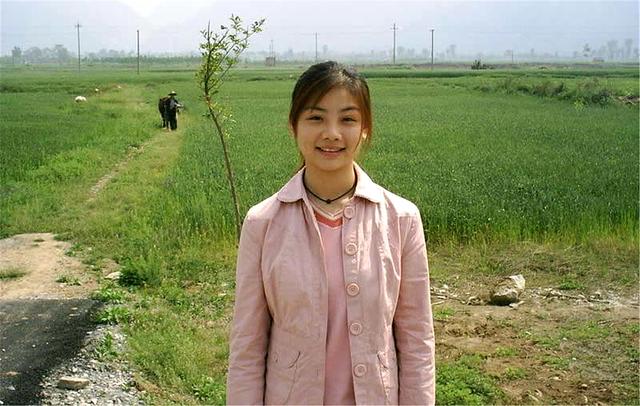Chinese herbal medicines are prone to insects, so there are key points in how to reduce losses and learn to store them.
Chinese herbal medicine
Traditional Chinese medicine refers to the original medicine used under the guidance of Han traditional medicine. In general, traditional Chinese medicine pays attention to authentic medicinal materials, which refers to the medicinal materials produced in a specific natural condition and ecological environment. Because the production is more concentrated, cultivation techniques, harvesting and processing are also paid attention to. As a result, the quality and curative effect of the same kind of medicinal materials produced in other areas are better than those produced in other areas.

Prepared pieces of traditional Chinese medicine
The prepared pieces of traditional Chinese medicine are processed according to the theory and processing methods of traditional Chinese medicine, and can be directly used in the clinical practice of traditional Chinese medicine. This concept shows that there is no absolute boundary between Chinese herbal medicines and prepared slices of traditional Chinese medicine. the prepared slices of traditional Chinese medicine include some slices of traditional Chinese medicine processed in the place of origin (including slices, blocks and slices). The prepared slices of the original medicinal materials and the slices that have been cut (on the basis of processing in the place of origin) and processed.
Storage of medicinal materials
To put it simply, medicinal materials generally can not be taken directly into medicine, and prepared slices can be used as medicine and taken after basic processing. Both medicinal materials and prepared slices are faced with the problem of storage. So how should medicinal materials or slices be stored?
When the water content of traditional Chinese medicine exceeds 15%, it is prone to insect pests, mildew and other deterioration. Therefore, for medicinal materials with high water content, it is necessary to use high temperature, sun, wind, lime desiccant and other forces. Drying, microwave, far infrared radiation and other methods are selected to reduce the water content to less than 15%.
The most common methods to reduce the water content of traditional Chinese medicine are:
Spread the medicine on the mat and put it in the sun. If conditions permit, shelves can be used to set up straw mats. For some medicinal materials with more water or starch, such as Fritillaria, lily, Corydalis, etc., they should be boiled or steamed with boiling water first. And then bask in the sun. Some medicinal materials are not durable in the sun, such as ephedra, the content of active ingredients will be reduced after a long sun exposure, and should be placed in a ventilated room or under a shaded shed to dry. In addition, some high-priced medicinal materials are prone to worms and mildew, such as ginseng and tiger bones, should be sealed and kept dry with lime.
The common deterioration phenomena of traditional Chinese medicine and prepared pieces of traditional Chinese medicine during storage are as follows:
Mildew, moth moth, discoloration, oil loss, loss of odor, weathering, deliquescence, sublimation, volatilization, adhesion, decay and so on will lead to changes in the quality of medicinal materials and the loss of certain efficacy.
General storage should follow the following principles:
Low temperature. It is not easy for molds and pests to grow below 10 ℃, and the deterioration reactions of medicinal materials such as oil flooding, melting, adhesion, odor loss and decay are not easy to occur at low temperature, so putting the medicinal materials in a cool and dry place (such as refrigerator) is beneficial to preserve their active components.
Avoid the light. Such as flowers and leaves that are easy to change in the light, should be stored in dark places and ceramic containers, colored glass bottles, to avoid direct sunlight.
classification. Classified storage according to the characteristics of medicinal materials, such as hedgehog skin, melon wilt and other fleshy, sweet medicinal materials easy to grow insects, should be put in the fumigation bank; Polygala, Pinellia ternata and other easy mildew, should pay attention to ventilation, sun exposure. In addition, highly toxic medicinal materials should be marked with eye-catching labels and kept by special personnel to prevent misuse and poisoning.
Sealed. Seed medicine (white lentil, malt, Coix seed, etc.), sealed preservation can prevent rat bite; easy weathering (mirabilite, etc.) and volatile (borneol, etc.) herbs, airtight preservation can avoid the loss of active ingredients. When sealing, put the medicine in a clean glass bottle, cover the bottle cap tightly, and seal it at the mouth of the bottle with wax. In addition, ceramic cans and vacuum bags are also good sealed containers.
Hezang. Storing Zanthoxylum bungeanum together with fishy-smelling animal medicines (pilose antler, ground dragon, etc.) can prevent animal medicine from worming and deterioration; put alisma and Cortex moutan in one place, Rhizoma Alismatis is not easy to eat, and Cortex moutan is not easy to deteriorate.
Insecticidal. Animal medicines such as mulberry cuttlebone and exposed beehives should be steamed before preservation to avoid hatching of insect eggs; at the same time, chemical drugs can be used to fumigate pests, usually sulfur can be ignited to produce sulfur dioxide fumigation when a small amount of medicinal materials are preserved, and chloropicrin fumigation can be sprayed when a large number of medicinal materials are preserved.
At present, the biggest problem in the storage of traditional Chinese medicine is moth-eating, which erodes the interior of the medicinal tissue, thus reducing the curative effect or losing the medicinal value. The main causes of moth infestation are:
Traditional Chinese medicine is contaminated during harvest and processing, and fails to kill the eggs completely when it is dry. Once the environmental conditions are suitable, the eggs will hatch adults.
Moth infestation is related to temperature, humidity and water content of medicinal materials (temperature 16 ℃, humidity 60%, water content of medicinal materials 11%, suitable temperature zone for pests; lethal high temperature zone is between 50 ℃-60 ℃, pests can lose life in a relatively short time; lethal low temperature zone is below-4 ℃, in this temperature range, pests are dehydrated to death due to freezing of body fluids and freezing damage of cell protoplasts.)
Moth infestation is related to the integrity of medicinal materials, and complete medicinal materials are less likely to produce insects than processed medicinal materials.
The easily motheaten medicinal materials are Radix angelicae dahuricae, Radix angelicae dahuricae, Fangfeng, Ligusticum chuanxiong, Ligusticum, alisma, lotus root, Radix Polygoni, Radix Astragali, Radix Curcumae, Radix Astragali, Radix angelicae Sinensis, Radix Isatidis, Radix Astragali, Radix Fritillariae, Radix angelicae Sinensis, Pinellia ternata, Radix Curcumae, Radix Glycyrrhizae, Platycodon grandiflorum, Radix Trichosanthis, Radix Codonopsis, Radix Ginger, Radix Scutellariae, Radix Gansui, Radix Euphorbiae, Radix Morinda officinalis, Radix Bupleuri, Radix Rehmanniae, Radix Rehmanniae Radix Sagittariae, Polygonum multiflorum, elm, black medicine, calamus, trigonum, cohosh, chicken blood vine, kaifeng vine, Qingfeng vine, mulberry bark, etc. Generally, there are Cortex Phellodendri, Cortex Toona, parasites, Cinnamomum cassia twig, winter flower, chrysanthemum, honeysuckle, Lantern flower, sheep flower, Daphne genkwa, Puhuang and so on.
In the warehouse, traditional Chinese medicine should be checked frequently, and the inspection time can be determined according to the season, and regular or irregular examinations can also be carried out. The inspection should focus on all kinds of mildew-prone traditional Chinese medicine and be classified in batches. During the inspection, we should pay attention to whether the medicine itself is moist, soft, moldy, oily and infested. Key medicinal materials must be unpacked or unpacked for inspection.
From August 20 to 22, the Beijing "Special Class on Chinese Herbal Medicine" of Agricultural Learning Valley and Jiren Medicine will analyze the problems of Chinese herbal medicines point by point, so as to inject more motivation into the traditional Chinese medicine people walking in the industry! Sign up for consultation and contact Mr. Shao (WeChat: qq_33165673)!
For more information, please follow the WeChat account of "Agricultural Valley" (WOA-OA).
- Prev

In rural areas, how much money can be regarded as a "ten thousand yuan household"?
In rural areas, how much money can be regarded as a "ten thousand yuan household"?
- Next

Rural left-behind woman, found a secret on her husband's mobile phone
Rural left-behind woman, found a secret on her husband's mobile phone
Related
- A course of planting techniques and methods on how to grow carrots
- How to plant the latest tulips?
- Is it better to pick tea in the morning or in the afternoon? When is the best time for tea to be picked? what is the third or fifth tea?
- Launch Yuanxiao Happy combination Haocha + Tea Yuan healthy Taste
- Penghu Tourism "Fireworks 20 Parade with You"
- 2022 West Lake Happiness holds "Digital Revitalization Voucher" and draws iphone13 and laptop.
- Banqiao Fuzhou social houses are designed to change start-up combined with police elimination to create a safe and livable environment
- The convenient measure of "mechanical weeding" in Xinbei has been abused and the Agriculture Bureau has imposed heavy penalties on the illegal land consolidation.
- Changgeng University Joins Hands with Four Memory Factories to Rescue Memory Talent Shortage
- The list of Taiwan's top 100 MVP managers is listed by the Director-General of the Farmers' Association of Sanxia District.

